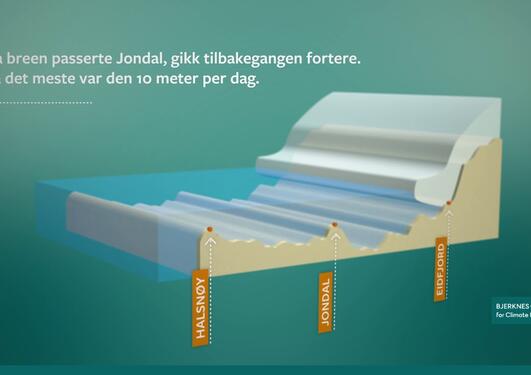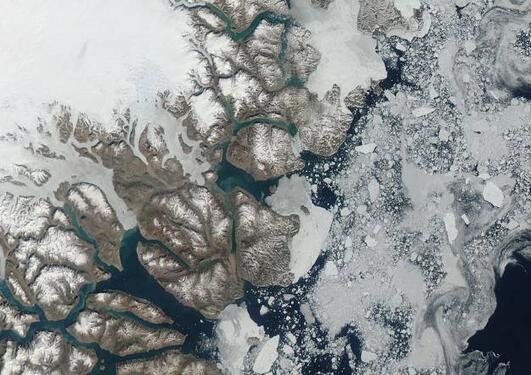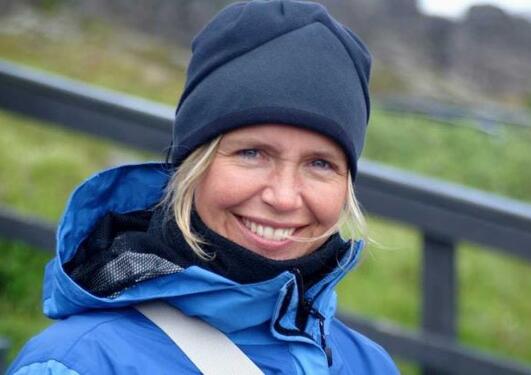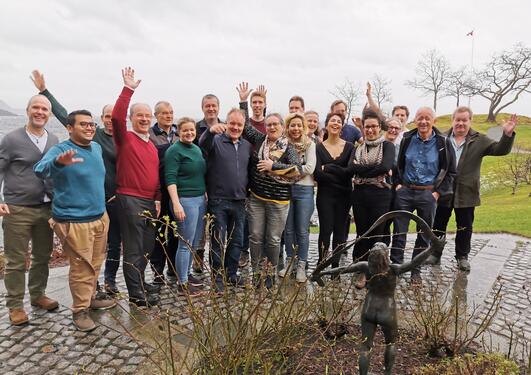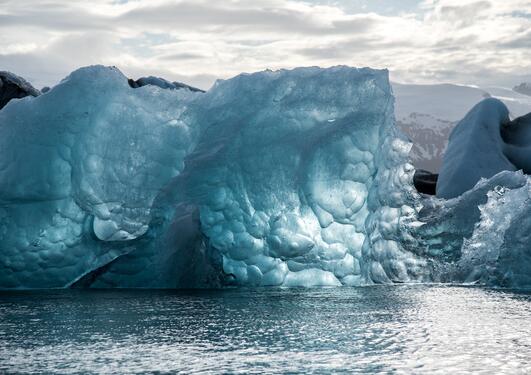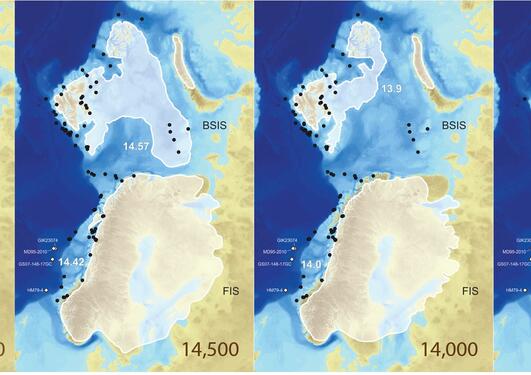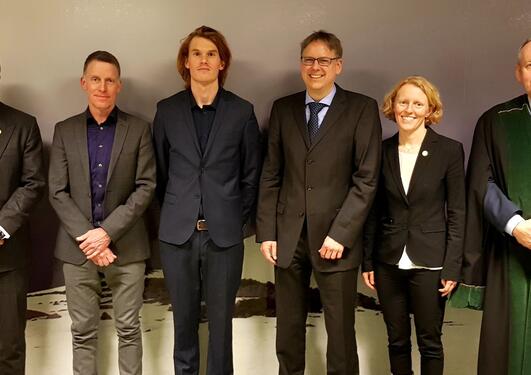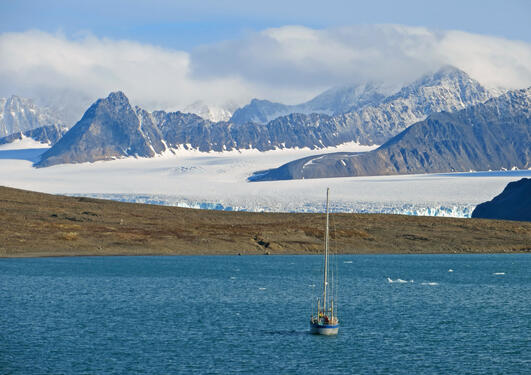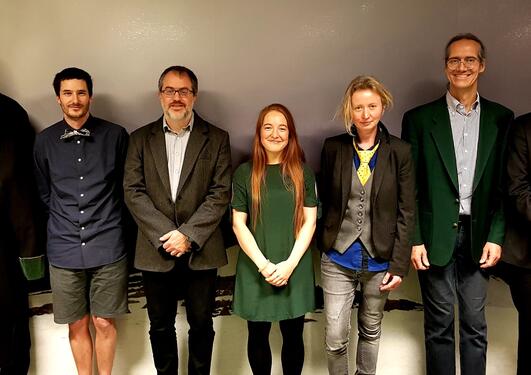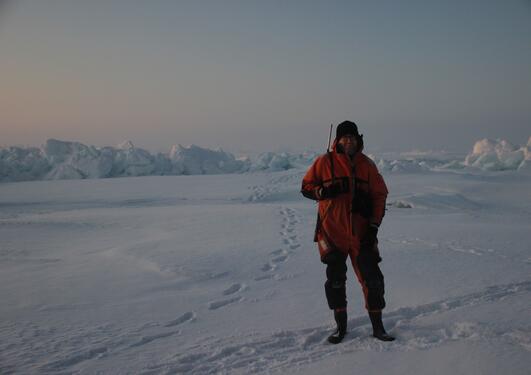News archive for Department of Earth Science
Mighty floods have carved out deep canyons on Earth. New research suggests this may have required less power than previously thought. Collecting such data, however, may be demanding.
The UN Ocean Science Decade gets off to a flying start through the University of Bergen’s new interdisciplinary SEAS Fellowship Programme.
For the next 5 years, UiB will be training a new generation of marine research leaders and decision makers to ensure sustainable oceans.
Invitation to the EPOS-Norway (EPOS-N) Final Workshop sharing the outcomes and achievements of the EPOS-N project in the areas of Solid Earth data integration and e-infrastructure, and Solid Earth monitoring in the Artic.
When the last ice age was over, a large glacier covering the 1000 meter deep Hardangerfjord collapsed. These events at the end of the ice age in Norway, resemble what we are about to witness in today’s Greenland.
Climate changed abruptly as the Nordic Seas turned rapidly from a white to a blue ocean (11.11.2020)
Widespread sea ice decline happened within 250 years or less and unleashed abrupt climate change during the last glacial period, a new study shows. This documents that the cause for the rapidity and severity of abrupt changes during the last glacial resides in the ocean. Henrik Sadatzki writes about the work he has been leading.
Modeling and inversion of seismic data using multiple scattering, renormalization and homotopy methods.
Temperature in the Southern Ocean was more tightly linked to the extent of Antarctic glaciation during past greenhouse climates than previously thought.
The effects of magmatic intrusions on temperature history and diagenesis in sedimentary basins and petroleum systems.
The Jebsen Centre has a new PhD candidate starting today!
Near the end of the last ice age, the global sea level rose 12–14 meters in less than 350 years. Most of the meltwater has been thought to have come from North America and Antarctica. A new study shows that the ice over coastal Norway and the Barents Sea may have contributed almost as much.
Last month Andreas Beinlich had a publication in Nature Geoscience, and this month we are happy to announce that a new publication from Jebsen Centre researchers is out in Nature Geoscience: Today Jo Brendryen, Bjarte Hannisdal, and Kristian Agasøster Haaga published “Eurasian Ice Sheet collapse was a major source of Meltwater Pulse 1A 14,600 years ago”.
MSc. Jonathan Winfieldd Rheinlænder ved Institutt for geovitenskap og Bjerknessenteret for klimaforskning disputerte fredag 17. januar med avhandlingen: "The role of ocean circulation and sea ice in abrupt climate change"
During the coldest years of the last ice-age the ice cap reached the British Isles and Polen. New research has revealed that an ice-free green spot existed further north - on a penisula close to Spitsbergen.
MSc. Silje Smith-Johnsen ved Institutt for geovitenskap og Bjerknessenteret for klimaforskning disputerte i dag med avhandlingen «Dynamics of the Northeast Greenland Ice Stream: the role of geothermal heat and subglacial hydrology».
An international and multidisciplinary team of 36 scientists and engineers, with the assistance of the officers and crew of the vessel, conducted a multidisciplinary investigation of deep (4000 m) hydrothermal vents under permanent ice cover in the Arctic.
Pages
- April 2024 (1)
- March 2024 (1)
- February 2024 (3)
- January 2024 (1)
- December 2023 (2)
- November 2023 (4)
- October 2023 (3)
- September 2023 (1)
- August 2023 (3)
- July 2023 (4)
- June 2023 (1)
- May 2023 (2)
- April 2023 (5)
- March 2023 (1)
- February 2023 (2)
- January 2023 (2)
- December 2022 (2)
- November 2022 (8)
- October 2022 (1)
- August 2022 (2)
- July 2022 (1)
- June 2022 (7)
- May 2022 (5)
- April 2022 (1)
- March 2022 (3)
- February 2022 (4)
- January 2022 (2)
- December 2021 (2)
- November 2021 (2)
- October 2021 (2)
- September 2021 (2)
- July 2021 (1)
- June 2021 (9)
- May 2021 (1)
- March 2021 (1)
- February 2021 (1)
- January 2021 (1)
- November 2020 (2)
- September 2020 (2)
- June 2020 (2)
- May 2020 (1)
- April 2020 (2)
- March 2020 (1)
- January 2020 (1)
- November 2019 (4)
- October 2019 (4)
- August 2019 (3)
- June 2019 (1)
- May 2019 (1)
- April 2019 (1)
- March 2019 (3)
- February 2019 (5)
- January 2019 (2)
- December 2018 (1)
- October 2018 (6)
- September 2018 (1)
- August 2018 (1)
- June 2018 (5)
- March 2018 (2)
- February 2018 (2)
- January 2018 (2)
- December 2017 (2)
- November 2017 (5)
- October 2017 (4)
- September 2017 (1)
- July 2017 (1)
- May 2017 (1)
- March 2017 (3)
- February 2017 (2)
- January 2017 (2)
- December 2016 (1)
- November 2016 (1)
- October 2016 (2)
- September 2016 (2)
- August 2016 (1)
- June 2016 (7)
- May 2016 (3)
- April 2016 (1)
- March 2016 (1)
- January 2016 (2)
- November 2015 (2)
- October 2015 (3)
- August 2015 (1)
- June 2015 (3)
- May 2015 (2)
- March 2015 (1)
- February 2015 (1)
- October 2014 (6)
- September 2014 (2)
- August 2014 (1)
- May 2014 (3)
- March 2014 (1)
- February 2014 (1)
- January 2014 (3)
- December 2013 (5)
- November 2013 (4)
- October 2013 (5)
- September 2013 (3)
- August 2013 (2)
- June 2013 (2)
- May 2013 (2)
- April 2013 (4)
- February 2013 (2)
- January 2013 (3)
- December 2012 (1)
- November 2012 (2)
- October 2012 (2)
- September 2012 (2)
- August 2012 (4)
- March 2012 (2)
- January 2012 (5)
- December 2011 (5)
- November 2011 (6)
- October 2011 (5)
- September 2011 (6)
- July 2011 (3)
- June 2011 (6)
- May 2011 (4)
- April 2011 (2)
- March 2011 (5)
- February 2011 (2)
- January 2011 (2)
- December 2010 (2)
- November 2010 (3)
- October 2010 (2)
- September 2010 (1)
- July 2010 (1)
- June 2010 (4)
- May 2010 (2)
- April 2010 (3)
- March 2010 (3)
- February 2010 (3)
- January 2010 (4)
- November 2009 (1)
- September 2009 (1)
- August 2009 (2)
- July 2009 (1)
- June 2009 (4)
- March 2009 (2)
- February 2009 (1)
- January 2009 (1)




